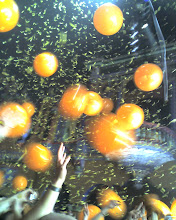Culture and history
The headdress once served as a symbol of authority, power. For example, in Ancient Egypt only the pharaoh could carry big headdress made of a striped fabric, which the crown was put on. All others classes, except for slaves, were content with wigs from a vegetative fiber. Wealthier the person, the wig was bigger and ringlets were more magnificent.
From the East the fashion on turbans had come to Europe. Turbans have received wide circulation. They were carried both by men and by women. Persians named a turban a fabric, which tied a head. The Persians spread this headdress widely across the Islamic world.
In the U.S. the baseball hat is a significant headdress. It represents sports, but more than that it represents a historic culture of people who are based around the national pastime of sports and family.
Society
Uniforms show different jobs and aspects of our culture that we choose to represent by the outward appearance. For example, a policeman can be identified right away by just his uniform.
Clothes speak louder than words or actions sometimes. Simply by wearing one type of hat or another, a person can speak about themselves in a variety of ways without even opening their mouths.
Teaching children to identify important figures within a society through clothing is an integral part of our society. We have already based many stories and figures such as Cat in the Hat and others simply on hats.
Protection
Hats started out to as a means to protect the head from weapons, weather elements or falling masonry. Therefore it is important to view hats as way of protecting the head.
85% of body heat is lost through the head. In inclement weather it is important to wear a hat to preserve body heat. Babies especially lose most of their body heat through the head so it is important to cover their heads to keep them healthy.
Wartime headwear has become almost an art form. For as long as humans have been fighting, there has been some kind of protection for the head. Since the head is the most vulnerable part of the human body, there has been much design between functionality in battle and maximum protection.
Hats are also a big part of construction protection. America’s first designated “Hard Hat Area” was set up at the San Francisco Golden Gate Bridge construction site. This day and age, it is required to wear a hard hat in a construction zone, for the fear of something falling and breaking your head.
Economy and Fashion
Fashion has become a luxury in today’s economic conditions. Because of the shaky economy, expensive and new clothing is quickly turning into unnecessary spending.
Sartorial trends signify more than just simple material desires. As retail marketers know, they're linked to socioeconomic cycles. In times of uncertainty the most appealing apparel functions as a panacea; bursts of color and conventionally flattering shapes can soothe our troubled minds. This year would certainly qualify as spectacularly uncertain. The stock market rides up and down like a high-speed roller coaster, while the dollar drops ever lower. The U.S. armed forces remain mired in Middle Eastern conflicts. And the economy is in, or is dancing close to, recession.
Fashion, by nature, is about perpetual change, which raises the question: what comes next. This question in the context of fashion is not much different from the question policymakers are asking. The next shift in fashion trends will signify more than just hemlines. It will also potentially signify the direction in which the economy and the social mood are headed. If the prevalence of the dress is a reaction to our collective unease, then a shift to more unorthodox styles might signify greater social security.
Fashion and hats have gone hand in hand for a long time. Some of the strongest statements have been made with just the hats. If you wear the wrong hat with an outfit it ruins it. If you wear the right one, it makes the outfit.
Hat Production
Straw and felt hats are made using the same basic technique, this is called "blocking". Hat materials can be hand blocked using wooden forms (blocks) or machine blocked using aluminum forms (pans), these are required when using a blocking machine. There is also another type of machine used by hat factories, this is the hydraulic press, necessary for the mass production of hats. Generally the technology employed for making hats has remained the same for many years and could be considered to be "low tech". All hats are made by hand in even the most up to date factory.
Felt differs from every other fabric in that it is made of a myriad of short, single animal fibers which are interlocked by their natural tendency to "crawl" and twist when kneaded and manipulated in hot water and steam. Felt is the strongest fabric known because every fiber is interlocked in every direction with a number of other fibers. All other fabrics are made of fibers which are first twisted into threads and then woven by hand or machine. As these threads are always woven either in right angle or parallel lines, the woven fabric may be torn apart along a straight line.
Subscribe to:
Post Comments (Atom)


No comments:
Post a Comment